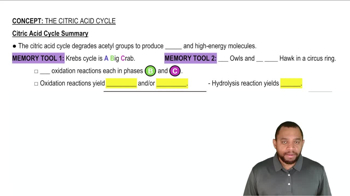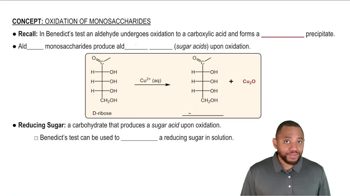Here are the essential concepts you must grasp in order to answer the question correctly.
Citric Acid Cycle
The citric acid cycle, also known as the Krebs cycle, is a series of chemical reactions used by all aerobic organisms to generate energy. It takes place in the mitochondria and involves the oxidation of acetyl-CoA to produce ATP, NADH, and FADH2, which are crucial for cellular respiration.
Recommended video:
Citric Acid Cycle Summary Concept 12
Oxidative Decarboxylation
Oxidative decarboxylation is a biochemical reaction that involves the removal of a carboxyl group from a molecule, releasing carbon dioxide, while simultaneously oxidizing the remaining molecule. This process is essential in the citric acid cycle for converting substrates into energy-rich compounds.
Recommended video:
Oxidation of Monosaccharides Concept 1
Key Reactions in the Citric Acid Cycle
In the citric acid cycle, the key reactions that involve oxidative decarboxylation are the conversion of isocitrate to alpha-ketoglutarate and the conversion of alpha-ketoglutarate to succinyl-CoA. These reactions are catalyzed by isocitrate dehydrogenase and alpha-ketoglutarate dehydrogenase, respectively, and are critical for the cycle's function and energy production.
Recommended video:
Citric Acid Cycle Summary Concept 12
 Verified step by step guidance
Verified step by step guidance


